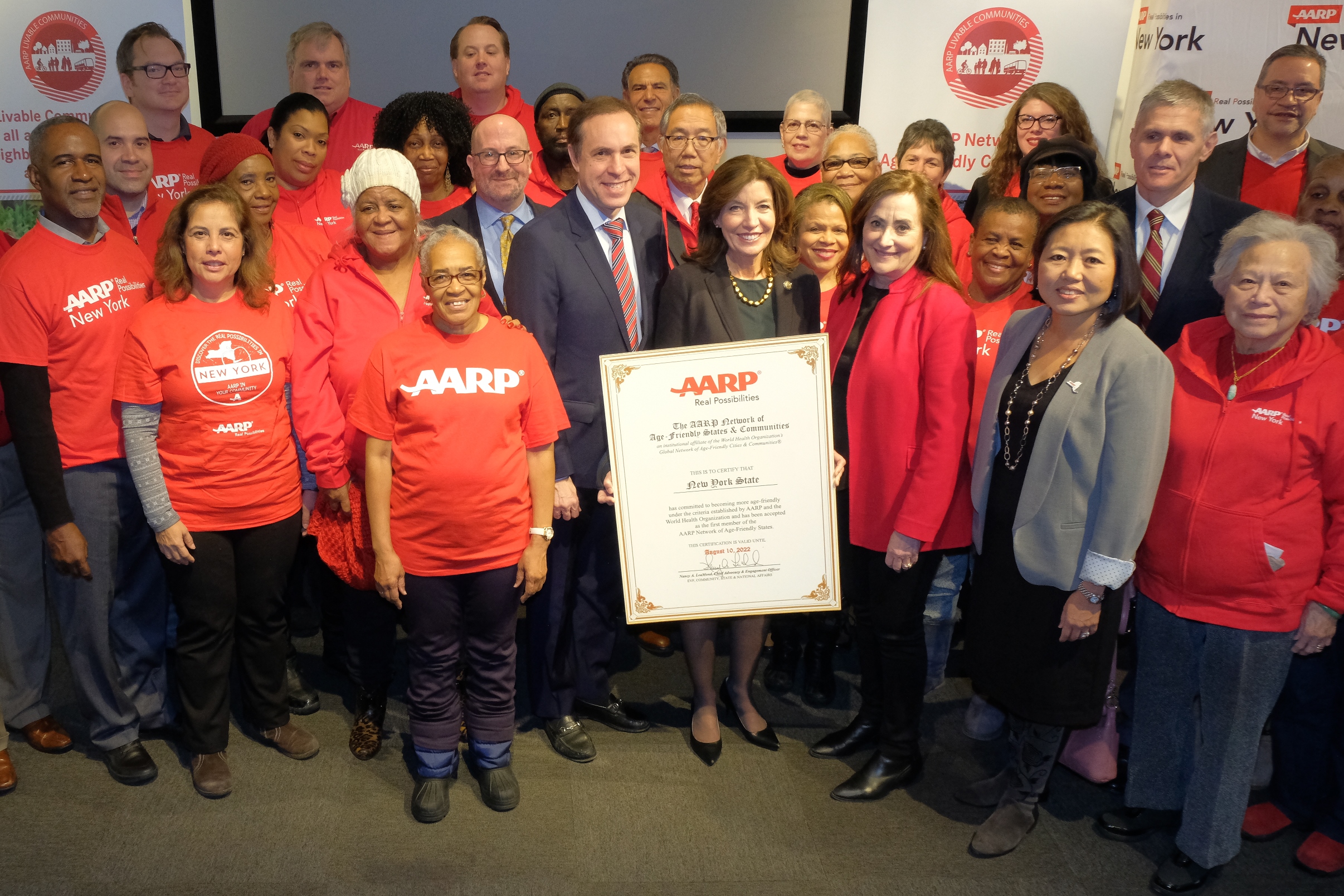AARP Hearing Center

AARP New York was joined December 14 by Lieutenant Governor Kathy Hochul , New York State Health Commissioner Dr. Howard Zucker, and New York State Office for the Aging Deputy Director John Cochran to announce that New York is the first state in the nation to join the AARP-World Health Organization Age-Friendly Network.
The event at New York City’s Senior Planet Exploration Center included the presentation to Lieutenant Governor Hochul of a certificate recognizing New York Governor Andrew Cuomo’s written commitment to make the state age-friendly under the criteria established by AARP and the WHO and the acceptance of New York as the first member of the AARP Network of Age-Friendly States.
“AARP New York is thrilled that ours has become the first state in the nation to be recognized with the Age-Friendly Network,” said AARP New York State Director Beth Finkel. “Governor Cuomo is showing great vision, foresight and leadership. His action will prompt a rethinking of how all of our communities are structured for the benefit not only of the 50+ but for New Yorkers of all ages. Improvements across the state such as more bus stop shelters and benches, better sidewalks and pedestrian-friendly streets, and parks where grandparents can take their grandchildren during working hours will help all generations."
AARP launched its Network of Age-Friendly Communities in April 2012 in affiliation with the World Health Organization’s GLOBAL Network of Age-Friendly Cities and Communities.
Since 2006, over 500 communities around the world have chosen to participate in the global network – which was created to get cities and towns prepared for the rapidly aging global population.
This announcement represents a breakthrough in the United States, with New York becoming the first state to join the Network – which now has expanded to the AARP Network of Age-Friendly States & Territories.
In the network there are eight facets that contribute to an age-friendly community, and the key for each is that they be accessible, safe and, as appropriate, affordable.
They are:
- Outdoor spaces and buildings, such as parks.
- Transportation, including public transportation.
- Housing that is affordable and accessible to older people who may, for example, be in wheelchairs.
- Social participation – with peers and with younger people.
- Respect and social inclusion.
- Civic participation and employment, including promotion of paid work and volunteer activities for older residents, and the opportunity for them to participate in formulating policies relevant to their lives.
- Communication and information, including promotion of and access to the use of technology to keep older residents connected to their community and friends and family, and
- Community support and health services, including those that promote wellness and active aging.
New York State will convene an advisory body that will include residents and non-governmental stakeholders across each of these eight facets, or “domains.”
The state will conduct an assessment of how age-friendly it is currently, looking at criteria like age distribution, economic well-being, housing affordability, accessibility and safety, access to and use of different transportation modes, pedestrian injuries and fatalities, and access to healthy food.
It will look at programs, services and funding, what age-friendly policies, procedures and legislation are currently in place, and what policies may be acting as barriers to age-friendliness.
It will go across the state to listen to community leaders and residents to understand needs and priorities.
And it is committed to applying an aging lens for planning, decision-making and funding across all state agencies.
After this, there will be an action plan for AARP’s review and endorsement, and then a four-year implementation and revision process with annual progress reports.
AARP is looking forward to working with New York State – which will serve as the model, showing other states the way.































































